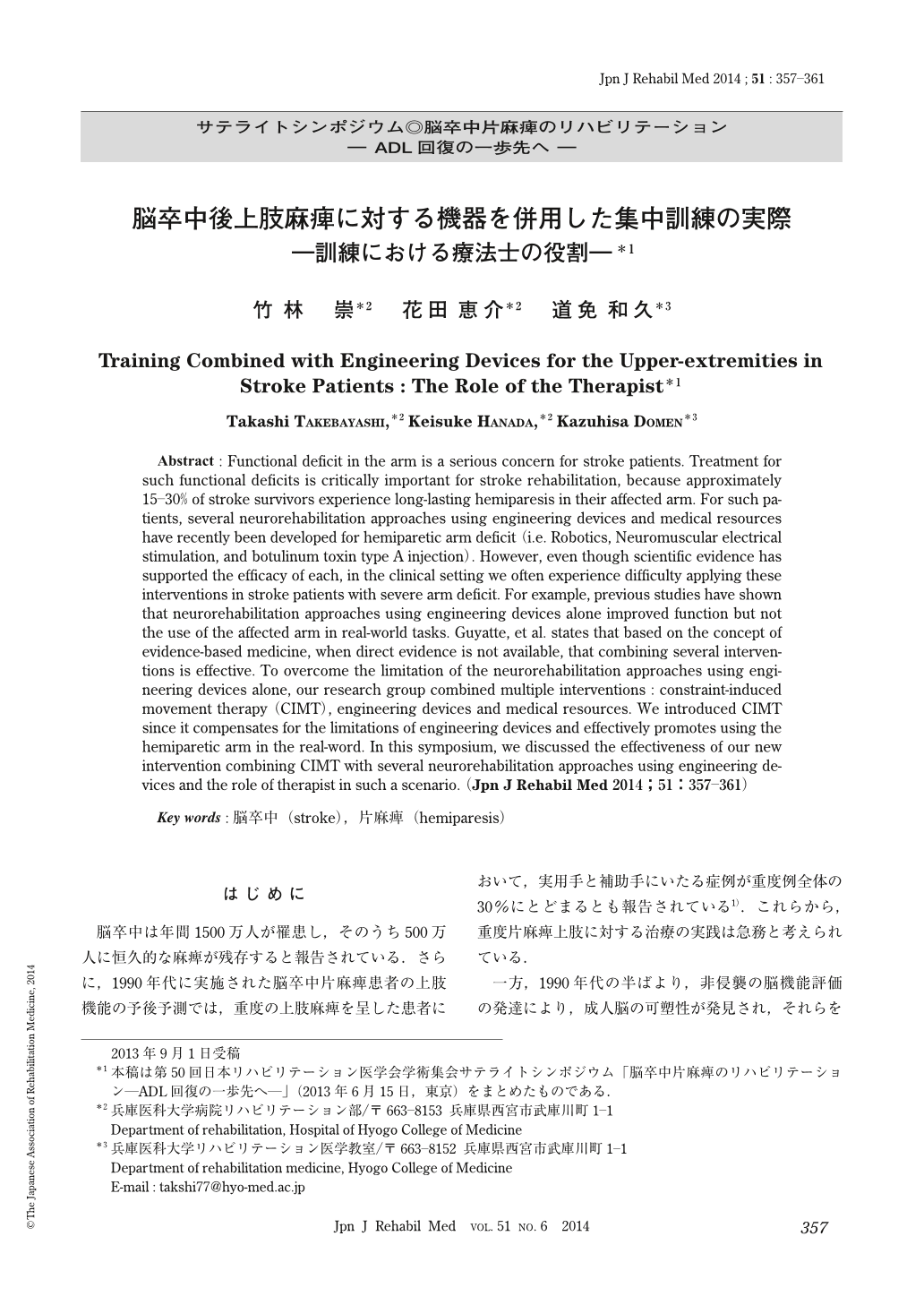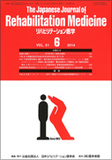Japanese
English
- 販売していません
- Abstract 文献概要
- 1ページ目 Look Inside
- 参考文献 Reference
はじめに
脳卒中は年間1500万人が罹患し,そのうち500万人に恒久的な麻痺が残存すると報告されている.さらに,1990年代に実施された脳卒中片麻痺患者の上肢機能の予後予測では,重度の上肢麻痺を呈した患者において,実用手と補助手にいたる症例が重度例全体の30%にとどまるとも報告されている1).これらから,重度片麻痺上肢に対する治療の実践は急務と考えられている.
一方,1990年代の半ばより,非侵襲の脳機能評価の発達により,成人脳の可塑性が発見され,それらを回復メカニズムとしたニューロリハビリテーション(神経リハビリテーション)が現在も盛んに行われている.近年では,Constraint-induced movement therapy(CI療法)といったニューロリハビリテーション(以下,リハ)の草分け的存在に加え,ロボット療法や工学機器を用いたNeuromuscular electrical stimulation(NMES)等が成果を上げている.しかしながら,それぞれの治療法に関してエビデンスは確立されているものの,脳卒中後重度の片麻痺を呈した患者の臨床において,個々の治療に関するエビデンスを単体で直接的に利用できる場面は限られる.Guyatteら2)は,Evidence Based Medicineの思想において,単独の治療における直接的なエビデンスが利用できない際,個々の患者にあわせて,様々なエビデンスをあわせた総合的なアプローチの必要性を述べている.我々は,重度の脳卒中後片麻痺患者の上肢訓練において,CI療法の他に過去の研究において検証された複数の医療・工学資源を併用したニューロリハを患者の状況にあわせ選択し,探索的に施行したので,その経過を通して医学・工学資源を用いたニューロリハにおける療法士の役割について述べたい.
Abstract : Functional deficit in the arm is a serious concern for stroke patients. Treatment for such functional deficits is critically important for stroke rehabilitation, because approximately 15.30% of stroke survivors experience long-lasting hemiparesis in their affected arm. For such patients, several neurorehabilitation approaches using engineering devices and medical resources have recently been developed for hemiparetic arm deficit (i.e. Robotics, Neuromuscular electrical stimulation, and botulinum toxin type A injection). However, even though scientific evidence has supported the efficacy of each, in the clinical setting we often experience difficulty applying these interventions in stroke patients with severe arm deficit. For example, previous studies have shown that neurorehabilitation approaches using engineering devices alone improved function but not the use of the affected arm in real-world tasks. Guyatte, et al. states that based on the concept of evidence-based medicine, when direct evidence is not available, that combining several interventions is effective. To overcome the limitation of the neurorehabilitation approaches using engineering devices alone, our research group combined multiple interventions : constraint-induced movement therapy (CIMT), engineering devices and medical resources. We introduced CIMT since it compensates for the limitations of engineering devices and effectively promotes using the hemiparetic arm in the real-word. In this symposium, we discussed the effectiveness of our new intervention combining CIMT with several neurorehabilitation approaches using engineering devices and the role of therapist in such a scenario.

Copyright © 2014, The Japanese Association of Rehabilitation Medicine. All rights reserved.


